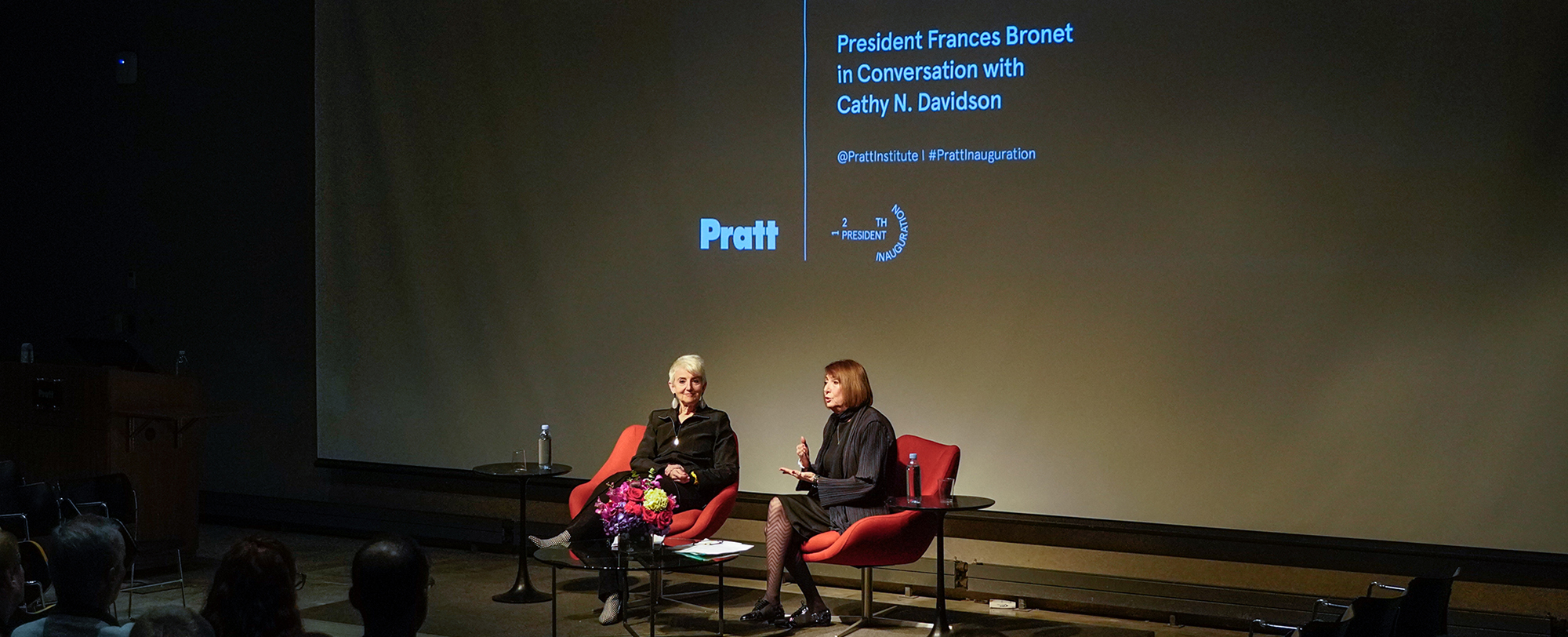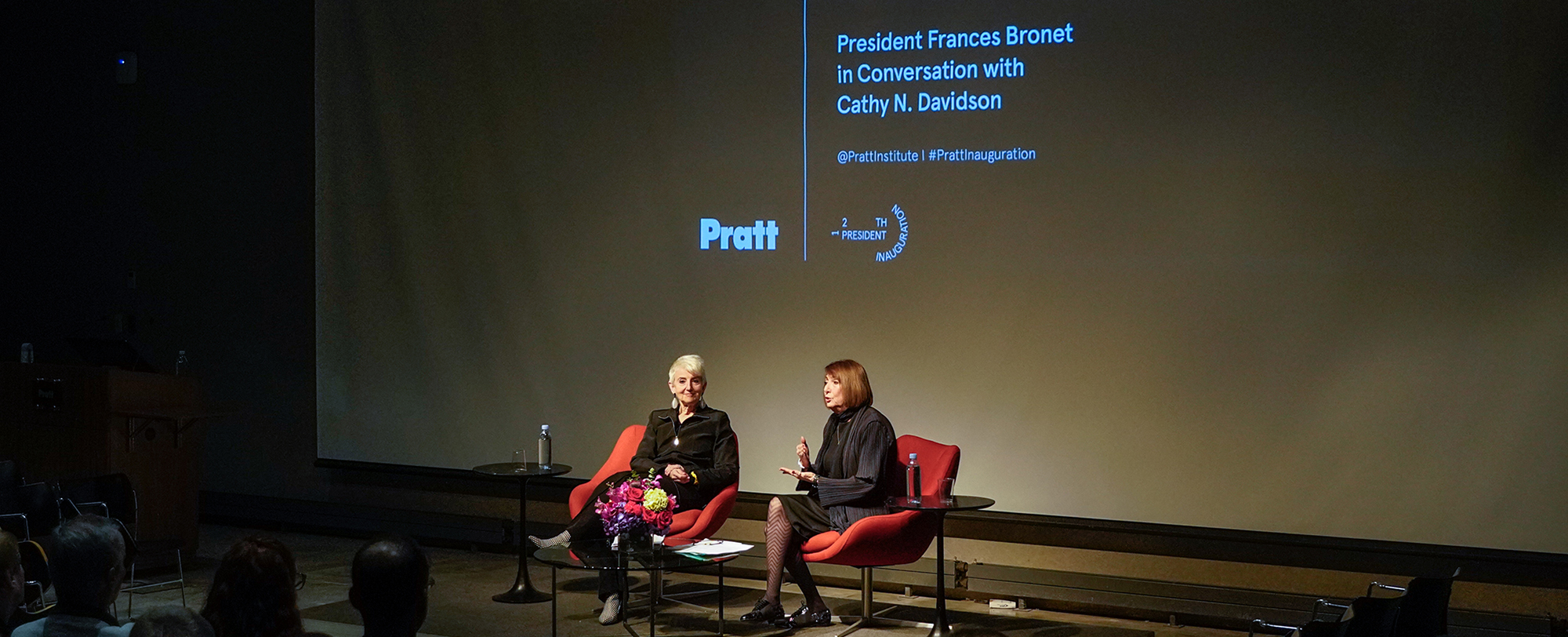
Pratt Institute President Frances Bronet sat down with renowned history and technology scholar, Cathy N. Davidson, for a lively conversation about the future of higher education that launched a week-long celebration of the inauguration of Frances Bronet as Pratt’s 12th president.
The President’s Lecture Series event on October 29 brought together Pratt students, faculty, and members of the community in Higgins Hall Auditorium for a discussion about how educators, students, and administrators can rethink norms in higher education, reimagine antiquated structures, and better equip students for a changing world.
During the engaging and wide-ranging conversation, Davidson touched on the history of higher education, how it has evolved, and how some things actually haven’t changed at all over more than a century.
She chronicled enduring structures that have reproduced inequality over the years, and the drastic need to assess our current education infrastructure from the ground up.
Our current education infrastructure had been initially “designed for a really specific reason, for the modern industrial age of the [Ford] Model T,” said Davidson. “We have a real mismatch between the language that justifies what we do as educators and the curriculum that’s often very stuck in this industrial model.”
President Bronet then asked a question that would drive the rest of the conversation. She asked, “What ultimately inspires change?”
Together, President Bronet and Davidson discussed the excitement and energy at colleges and universities across the country for new models and ideas. However, Davidson noted that a paradigm shift cannot begin until the core structure is changed.
“You can’t change structural inequality with goodwill; you can only change structural inequality if you create new structures where you’re actually trying to design equality at their core. Otherwise, you get a self-replicating university with excitement happening at the peripheries,” she said.
In Davidson’s book, The New Education: How to Revolutionize the University to Prepare Students for a World in Flux, it was this idea of inequality that first prompted President Bronet to reach out to Davidson. President Bronet pointed out that the excitement at the periphery is more often seen at the core of art and design education, through its immersive, embodied, experiential, and multimodal approach, compared with programs related to some other fields of study.
However, the question became, how do you scale and replicate the art and design model for other disciplines to follow?
President Bronet spoke from her background as an architect about how every mode of inquiry is used within that discipline. She explained that while architecture has some of the normative fields of study seen at liberal arts schools, it is still fundamentally a studio practice model. She added that the social engagement that comes with the studio model “becomes a cauldron of learning.”
At the same time, she noted that there may still be some structures within studio practices that need changing. Listening carefully to the voices of the students led to a discussion about critique in art and design education and the need to have the structure of every critique end with an opening, a pathway that can lead to something better.
After a thoughtful exchange, President Bronet called on a few people in the audience to share their perspectives, and asked Fine Arts Chair Jane South to discuss how to get students to move forward positively after critique. South emphasized that critique is deeply a part of the process of the work, not something that happens just at the end, and also discussed the importance of acknowledging our biases in approaching a work of art.
Later, the audience participated in an activity that, in the true spirit of Davidson’s approach, invited them to come up with their own ideas.
At the start of the event, each audience member was given a note card and pencil. Near the end of the session, Davidson introduced an inventory method exercise (think-pair-share), in which the audience wrote down three words they felt about Pratt in the moment, and then two creative, bold ideas the audience hoped to bring to Pratt this year. The dynamic and vibrant discussion closed with the audience sharing their ideas and thoughts for the future—on collaboration, design as leadership, community engagement, and more.
Find more information about events and activities celebrating President Bronet’s inauguration.
Image credit: Rebecca Smeyne
